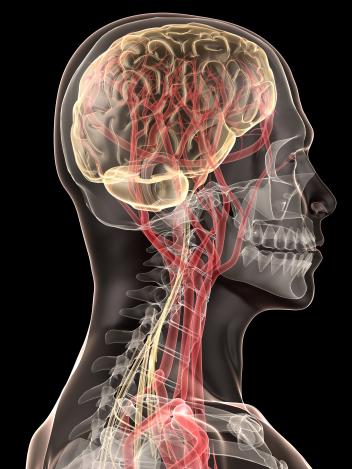There is currently no cure for Parkinson’s – a disease caused by gradual loss of
dopamine-producing brain cells. Animal studies show that symptoms can be relieved by
infusing dopamine into the brain, but researchers are still working out how to get
dopamine drugs to cross from the bloodstream into the human brain, which is protected by
the blood-brain barrier.

The blood-brain barrier protects the brain from pathogens and toxic agents in the bloodstream.
Now, a team has devised a way to use nanoparticles to ferry dopamine across the
blood-brain barrier and shown it reverses Parkinson’s-like symptoms in rats.
The researchers – from the CSIR-Indian Institute of Toxicology Research in Lucknow –
describe their work in the journal ACS Nano.
The number of people with Parkinson’s disease – which mostly strikes after middle age
– is rising faster than ever as our population ages. The progressive disease, which
gradually erodes quality of life as symptoms worsen, is thought to affect around 1 in 500
people.
The new and growing field of nanotechnology is finding many applications in medicine.
One reason for this is that it offers the opportunity to make tiny tools that interact
with cells in useful ways.
Dopamine is a brain chemical that nerve cells involved in movement use to send signals
to each other.
If levels of dopamine drop, the nerve cells cannot communicate effectively, leading to
the shaking and movement problems associated with Parkinson’s.
The blood-brain barrier is a dynamic interface made of highly specialized cells that
line nearly all the blood vessels in the brain. It protects the brain and central nervous
system from pathogens and toxic agents that might be circulating in the bloodstream. It
also stops many drugs – including dopamine – from passing into the brain.
Dopamine-loaded biodegradable nanoparticles crossed the blood-brain barrier
Fast facts about symptoms of Parkinson’s disease
- The four main symptoms are tremors, stiffness, instability and slowness of
movement
- Other symptoms may include difficulty swallowing, chewing and speaking,
constipation and urinary problems, skin problems, depression and sleep disruption
- The number and intensity of symptoms vary from person to person.
Find out more about Parkinson’s
For their study, the team packaged dopamine inside biodegradable nanoparticles that
had already been developed for delivering other drugs to the brain.
The nanoparticles successfully traversed the blood-brain barrier in rats with
Parkinson’s-like symptoms, released their dopamine cargo over several days, and reversed
the movement problems in the animals.
The authors note the treatment also reversed brain chemical deficits associated with
Parkinson’s and there were no side effects.
The Indian Department of Science and Technology and the Council of Scientific and Industrial Research (India) helped fund the study.
Earlier this year, Medical News Today learned how researchers have developed
a peptide that may slow Parkinson’s disease. The man-made
peptide stops the formation of faulty protein fibrils that kill the brain cells that
produce dopamine.